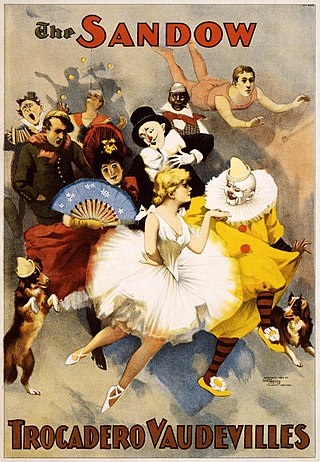
Vaudeville is a theatrical genre of variety entertainment which began in France at the end of the 19th century. A vaudeville was originally a comedy without psychological or moral intentions, based on a comical situation: a dramatic composition or light poetry, interspersed with songs or ballets. It became popular in the United States and Canada from the early 1880s until the early 1930s, while changing over time.
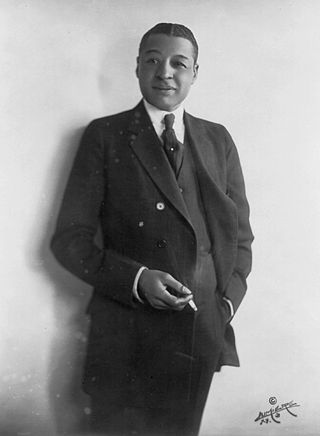
Bert Williams was a Bahamian-born American entertainer, one of the pre-eminent entertainers of the vaudeville era and one of the most popular comedians for all audiences of his time. He is credited as being the first Black man to have the leading role in a film: Darktown Jubilee in 1914.

Sophie Tucker was an American singer, comedian, actress, and radio personality. Known for her powerful delivery of comical and risqué songs, she was one of the most popular entertainers in the U.S. during the first half of the 20th century. She was known by the nickname "the Last of the Red-Hot Mamas".

Antonio Pastor was an American impresario, variety performer and theatre owner who became one of the founding forces behind American vaudeville in the mid-to-late-nineteenth century. He was sometimes referred to as the "Dean of Vaudeville". The strongest elements of his entertainments were an almost-jingoistic brand of United States patriotism and a strong commitment to attracting a "mixed-gender" audience, the latter being something revolutionary in the male-oriented variety halls of the mid-century. Although he was a performer and producer, Pastor is best known for "cleaning up" bawdy variety acts and presenting a clean and family-friendly genre called vaudeville.
Ted Shapiro was a United States popular music composer, pianist, and sheet music publisher.
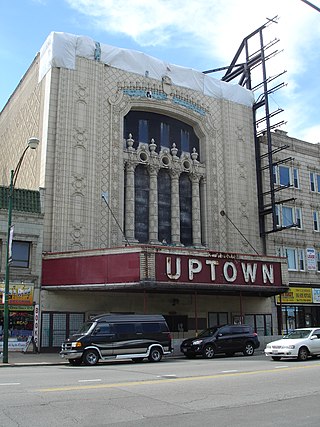
A movie palace is any of the large, elaborately decorated movie theaters built between the 1910s and the 1940s. The late 1920s saw the peak of the movie palace, with hundreds opening every year between 1925 and 1930. With the advent of television, movie attendance dropped, while the rising popularity of large multiplex chains in the 1980s and 1990s signaled the obsolescence of single-screen theaters. Many movie palaces were razed or converted into multiple-screen venues or performing arts centers, though some have undergone restoration and reopened to the public as historic buildings.
Theatre Owners Booking Association, or T.O.B.A., was the vaudeville circuit for African American performers in the 1920s. The theaters mostly had white owners, though there were exceptions, including the recently restored Morton Theater in Athens, Georgia, originally operated by "Pinky" Monroe Morton, and Douglass Theatre in Macon, Georgia owned and operated by Charles Henry Douglass. Theater owners booked jazz and blues musicians and singers, comedians, and other performers, including the classically trained, such as operatic soprano Sissieretta Jones, known as "The Black Patti", for black audiences.

The Chicago Theatre, originally known as the Balaban and Katz Chicago Theatre, is a landmark theater located on North State Street in the Loop area of Chicago, Illinois. Built in 1921, the Chicago Theatre was the flagship for the Balaban and Katz (B&K) group of theaters run by A. J. Balaban, his brother Barney Balaban and partner Sam Katz. Along with the other B&K theaters, from 1925 to 1945 the Chicago Theatre was a dominant movie theater enterprise. Currently, Madison Square Garden, Inc. owns and operates the Chicago Theatre as a 3600 seat performing arts venue for stage plays, magic shows, comedy, speeches, sporting events and popular music concerts.

The Hippodrome Theatre, also called the New York Hippodrome, was a theater in New York City from 1905 to 1939, located on Sixth Avenue between West 43rd and West 44th Streets in the Theater District of Midtown Manhattan. It was called the world's largest theatre by its builders and had a seating capacity of 5,300, with a 100x200ft (30x61m) stage. The theatre had state-of-the-art theatrical technology, including a rising glass water tank.
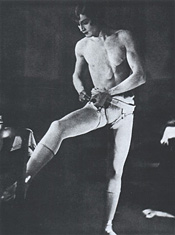
Vander Clyde Broadway, stage name Barbette, was an American female impersonator, high-wire performer, and trapeze artist born in Texas. Barbette attained great popularity throughout the United States but his greatest fame came in Europe and especially Paris, in the 1920s and 1930s.

Flournoy Eakin Miller, sometimes credited as F. E. Miller, was an American entertainer, actor, lyricist, producer and playwright. Between about 1905 and 1932 he formed a popular comic duo, Miller and Lyles, with Aubrey Lyles. Described as "an innovator who advanced black comedy and entertainment significantly," and as "one of the seminal figures in the development of African American musical theater on Broadway", he wrote many successful vaudeville and Broadway shows, including the influential Shuffle Along (1921), as well as working on several all-black movies between the 1930s and 1950s.

George Walker was an American vaudevillian, actor, and producer. In 1893, in San Francisco, Walker at the age of 20 met Bert Williams, who was a year younger. The two young men became performing partners. Walker and Williams appeared in The Gold Bug (1895), Clorindy (1898), The Policy Player (1899), Sons of Ham (1900), In Dahomey (1903), Abyssinia (1906), and Bandanna Land (1907). Walker married dancer Ada Overton, who later also was a choreographer.

Katherine Gertrude Hoffmann was an American early 20th-century vaudeville dancer and choreographer.

George Michael Cohan was an American entertainer, playwright, composer, lyricist, actor, singer, dancer and theatrical producer.
Richard Pilbrow was a British stage lighting designer, author, theatre design consultant, and theatrical producer, film producer and television producer. He was the first British lighting designer to light a Broadway musical on the Broadway stage with the musical Zorba.
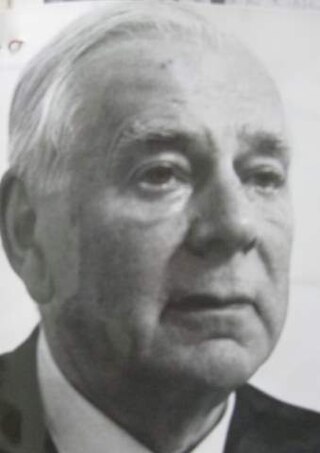
Hermann Rosse was a Dutch-American architect, illustrator, painter, theatrical designer, and art director. He won an Academy Award for Best Art Direction for the film the King of Jazz.

The Orpheum Theater opened in Champaign, Illinois in 1914 on the site of a vaudeville theater built in 1904. Designed by the Architectural firm Rapp & Rapp, the Orpheum was built to accommodate both live vaudeville performances and the projection of film. After a series of renovations and changes of ownership, the Orpheum screened its final film in 1986.
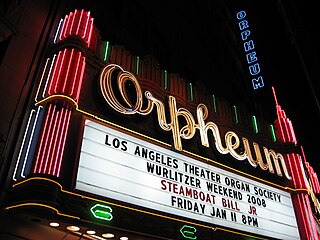
The Orpheum Circuit was a chain of vaudeville and movie theaters. It was founded in 1886, and operated through 1927 when it was merged into the Keith-Albee-Orpheum corporation, ultimately becoming part of the Radio-Keith-Orpheum (RKO) corporation.
The Vaudeville Managers Association (VMA) was a cartel of managers of American vaudeville theaters established in 1900, dominated by the Boston-based Keith-Albee chain. Soon afterwards the Western Vaudeville Managers Association (WVMA) was formed as a cartel of theater owners in Chicago and the west, dominated by the Orpheum Circuit. Although rivals, the two organizations collaborated in booking acts and dealing with the performers' union, the White Rats. By 1913 Edward Franklin Albee II had effective control over both the VMA and WVMA. In the 1920s vaudeville went into decline, unable to compete with film. In 1927 the Keith-Albee and Orpheum chains merged. The next year they became part of RKO Pictures.

Klaw and Erlanger was an entertainment management and production partnership of Marc Klaw and Abraham Lincoln Erlanger based in New York City from 1888 through 1919. While running their own considerable and multi-faceted theatrical businesses on Broadway, they were key figures in the Theatrical Syndicate, the lucrative booking monopoly for first-class legitimate theaters nationwide.















